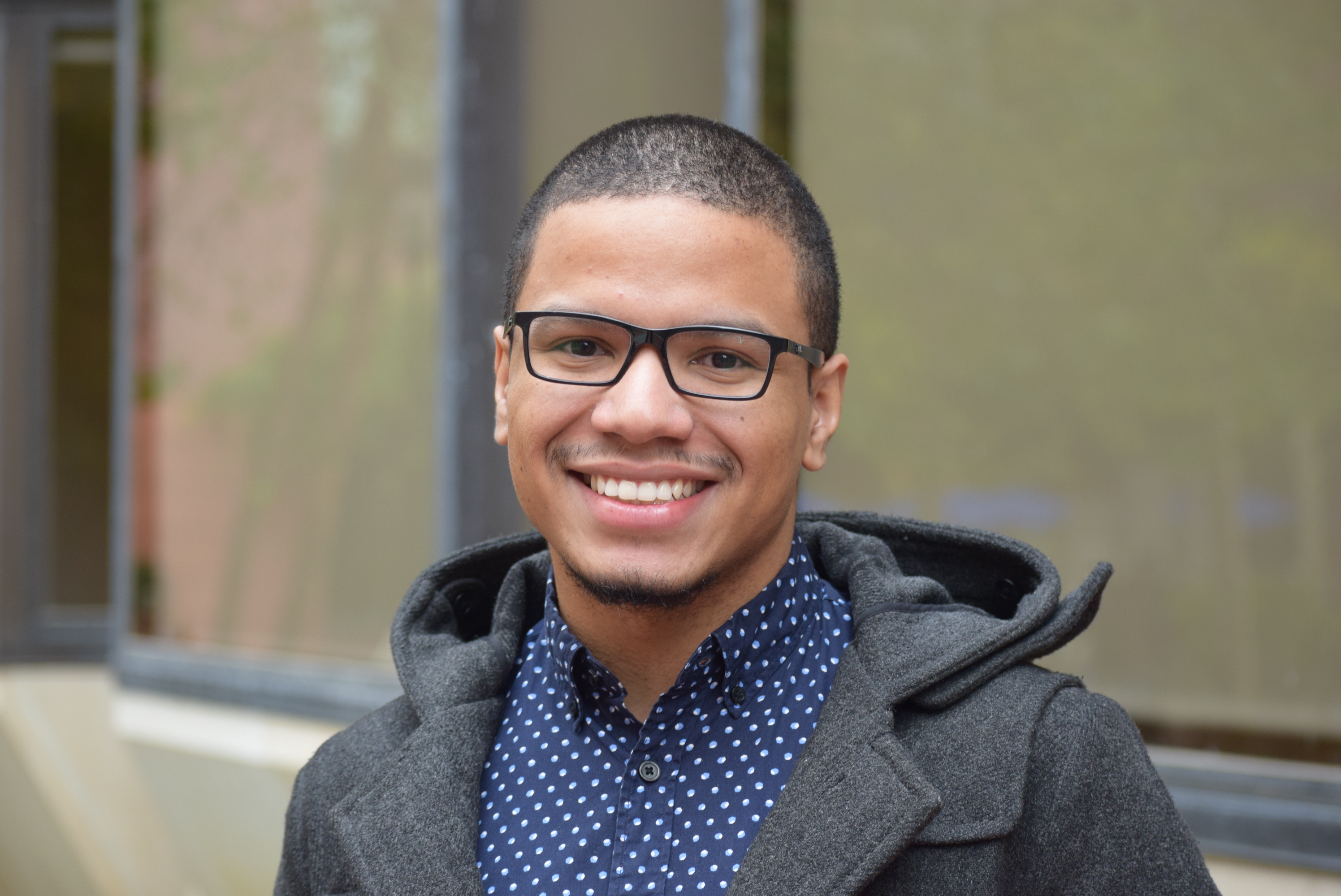The Costs of the American Dream
Alexander Adames, a PhD candidate in sociology, examines the predictors and consequences of social mobility for people from different racial and ethnic backgrounds.
Since the 1950s, the American dream has become synonymous with upward mobility and economic stability. If you work hard enough, you’ll be rewarded with a good-paying job, a house, a family—all the comforts and security of the middle class. The allure of the American dream has persisted through economic downturns, housing market crashes, and now a pandemic. But for whom is the dream still viable? And for those who do achieve it, what then?
“It’s rare to see in research that people are interested in the consequences of mobility, because people see it as just being a good thing,” says Alexander Adames, a doctoral candidate in sociology who studies the predictors, as well as the costs, of attaining the American dream.
Broadly, Adames’ research concerns what sociologists refer to as social stratification and social mobility, which he explains as “the prospects of people who grow up in disadvantaged households, particularly economically disadvantaged households." The issue with the “success sequence” of the American dream, Adames says, “is that people have different access to things” like education, connections, and job opportunities. Adames’ dissertation examines how these childhood variables predict socioeconomic outcomes in adulthood, prompting other considerations such as whether social mobility comes at a cost for people from minoritized backgrounds.
“Even if you do achieve the American dream, it’s not like everything’s fine now,” Adames says, noting social costs to upward mobility like cultural and familial distancing. In a working paper co-authored with Jingying He, a postdoctoral researcher; Xi Song, Associate Professor of Sociology; and Irma Elo, Professor and Chair of Sociology; Adames attempts to quantify other costs, by examining how social mobility shapes a person’s mortality risk. Analyzing data from the Census and Social Security Administration records of people who were 15 to 25 years old in 1940, Adames and his co-authors hypothesized that any disparities they observed would be shaped by the measures they selected. A former CDC Undergraduate Public Health Scholar, Adames explains that, when examining the association between socioeconomic status and mortality, researchers tend to look at a single measure, such as childhood or adulthood socioeconomic status, rather than the interaction between these different variables. By looking at socioeconomic status both in childhood and at different points in adulthood, Adames and his fellow researchers found that, within the same social stratum, “there is inequality based upon the socioeconomic conditions of a person’s childhood.”
Adames further explains that, when it comes to mortality risks, the advantage level of a person’s starting conditions, the degree of mobility between childhood and adulthood, and the interaction between the two all make an impact. Someone who is born into a higher socioeconomic status and moves to a lower one will remain protected by their starting point, while more incremental mobility—say, from a middle to a low occupational ranking—affords less protection. By dividing their analysis by race, Adames, He, Song, and Elo also discovered that previous studies’ findings of a lower mortality risk for people who moved from the bottom to the top applied only to whites. For Black people, Adames says he and his co-authors found no association whatsoever between upward mobility and mortality risk. A reason for this disparity? Black people who were between the ages of 15 and 25 in 1940 grew up under Jim Crow conditions.
In another paper examining income elasticity, or the correlation between childhood and adulthood socioeconomic status, Adames, Song, and Arthur Sakamoto, sociology professor at Texas A&M University, similarly found that “the measures we choose shape the extent of the disparities we see.” In contrast to other economic and sociological studies of social mobility that rely on a single age range for both childhood and adulthood, Adames, Song, and Sakamoto’s paper looks at different childhood age ranges to assess how strongly measurements of childhood socioeconomic background predict adult income status. For white children, Adames says he and his co-authors found that childhood income is more predictive of adult income in mid-adulthood than early adulthood, while for Black children, the strength of the relationship is low, suggesting that childhood socioeconomic status is less influential for the social mobility of Black children. Adames has presented the paper at several conferences, including the Population Association of America, a national demography conference, and the American Sociological Association Annual Meeting.
“The achievement of the American Dream is the modus operandi of my research,” Adames says, explaining that it not only motivated his parents to immigrate to the United States, but in many ways, guides his own interests.
For his dissertation, Adames, an Institute of Education Sciences (IES) Pre-doctoral Training Fellow, plans to examine how the strength of the associations described in his papers varies depending on the types and levels of education a person obtains. Funded by the United States Department of Education, the IES fellowship program supports Ph.D. students interested in applied education research. It’s another dimension of the interdisciplinary background on which Adames draws to pursue his studies on the American dream. Adames is also completing a master’s degree in statistics from the Wharton School, where he’s strengthening his training in econometrics and causal inference, techniques that he hopes will allow him to turn his observations about the costs of social mobility, for children from immigrant families and lower socioeconomic backgrounds, into quantifiable data.



